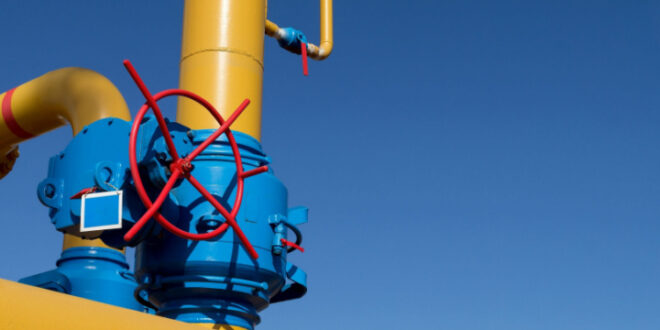This month, a cold front swept across much of Europe and giant tankers that carry fuel through the Red Sea were rerouted to avoid escalating violence. That should have pushed gas prices higher. Instead, they just kept falling.
Even if it’s a step too far to give Europe the all-clear, it’s a strong sign that the worst of the nightmare that sent energy bills soaring and pushed inflation to multi-year highs is in the past.
Europe is benefiting from having amassed record gas reserves last year, along with help from renewables and a relatively mild winter — some cold snaps aside. Sluggish economic growth is also playing a part, capping demand for energy in major industrial powers such as Germany.
That’s been enough to boost confidence across trading desks that the region is on a stable-enough footing to get through the rest of the winter with gas to spare. Benchmark European prices are currently trading under €30 a megawatt-hour, about a tenth of the peak levels in 2022.
Still, having scraped through the crisis, Europe has emerged into a new reality that has its own list of challenges.
It’s now relying more on renewables, and will have to deal with the intermittency of that power generation. With the loss of Russian gas, on which it was overly dependent before the invasion of Ukraine, it’s also had to look elsewhere to fulfill its fuel needs. That means vying for a share of foreign liquefied natural gas cargoes with other parts of the world.
“Just by looking at prices, it seems that the crisis is over,” said Balint Koncz, head of gas trading at MET International in Switzerland. “However, we are now reliant on global factors, which can change rapidly.”
“Prices could rise again, even in this heating season, if there’s a sudden supply disruption or an extended period of cold weather,” he said.
One key risk is the Middle East amid attacks on ships in the Red Sea, a route that Qatar uses to send LNG to Europe. Oil and gas tankers are avoiding the area, instead opting to go around the southern tip of Africa. On a typical day, roughly two to three LNG vessels would be using the passage, according to data from Kpler.
Alternative Energy
Gas prices plunged almost 60% in 2023 and are down a further 12% so far this year, which should help to lower consumers’ energy bills.
In the UK, the state-regulated price cap will fall almost 14% by spring, consultancy Cornwall Insight estimated in December.
“This is the second winter that Europe is experiencing without Russian gas,” said Kim Fustier, HSBC Holdings Plc head of European oil & gas research. “The fact that there is now a precedent — the 2022-2023 winter that went without any issues — is helping to calm traders’ nerves.”
Europe’s build-out of renewable energy means a dwindling share for gas in the continent’s power mix. An increase in wind turbines and solar installations has helped reduce the need for the fuel, together with a recovery in French nuclear production last year.
But there’s a long road ahead, with many potential bumps. A gas pipeline transit agreement between Russia and Ukraine expires at the end of this year — and is unlikely to be renewed — meaning that the continent could get even less gas from Russia. While there’s a massive global investment in LNG, much of the new capacity won’t come to the market until 2025 and 2026.
And extreme weather events are becoming more frequent, straining power systems and sometimes boosting demand for gas.
In Asia, strong inventories mean gas prices there are also declining at the moment, and are at the lowest since June. LNG buyers in Japan, the world’s second biggest importer of the super-chilled fuel, are actively selling shipments because they have too much. Some of those cargoes are likely to make their way to Europe.
While there are pockets of demand, particularly in India and China, those purchases are primarily driven by traders looking for a good deal.
The story is much the same in the US, where gas futures dropped about 20% last week as storage remains well above the five-year average. Cold weather drove up power demand and froze some gas wells, but did little to boost futures.
Canal Disruption
Still, issues at two key LNG passages — the Suez Canal and the drought-hit Panama Canal — are lengthening journeys, adding to the cost of shipping and stretching the global fleet of ships. While traders don’t appear to be too fussed, a prolonged disruption could change that.
The decline in gas prices from the 2022 peaks hasn’t always been one way.
Intense bouts of volatility — from LNG strikes in Australia to outages in the US to the outbreak of the Israel-Hamas war — have caused spikes, offering reminders that the current calm isn’t guaranteed to last.
“We are still very cautious on what is going to happen next,” Stefan Rolle, head of energy policy at Germany’s Energy Ministry said at the Americas Energy Summit in New Orleans on Thursday.

 Iran Energy News Oil, Gas, Petrochemical and Energy Field Specialized Channel
Iran Energy News Oil, Gas, Petrochemical and Energy Field Specialized Channel



